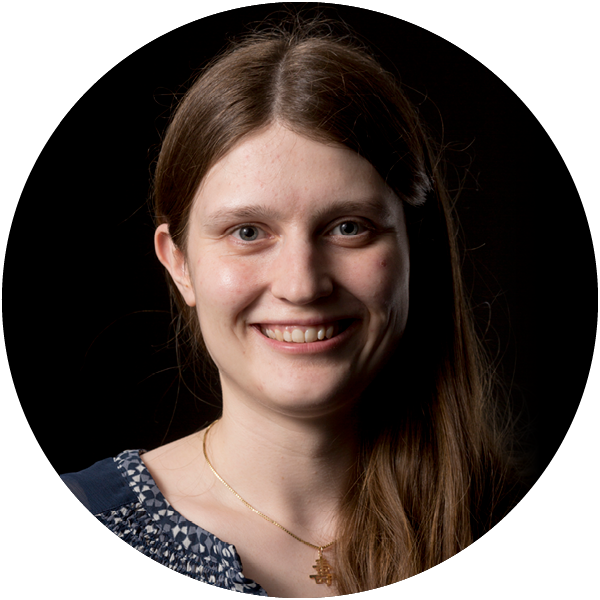
Project A05:
Molecular fingerprints of organic aerosol in the UTLS region
Brief Summary
We propose a unique combination of laboratory and field experiments to identify the origin of secondary organic aerosol (SOA) in the UTLS. So far, it is unclear what are the sources and formation pathways of organic aerosols, and which volatile organic compounds (VOCs) are the precursor gases for the SOA observed in the UTLS. Since oxidation products of small VOCs, such as isoprene, have diverse functional groups including reactive carbonyl groups, these compounds may undergo condensed phase reactions in aqueous aerosol particles or liquid cloud droplets, which are likely to affect the formation of new particles in the outflow of convective systems.
A novel molecular fingerprinting approach will enable us to identify and attribute VOC-oxidation and condensed-phase-chemistry products to their parent VOC. In laboratory studies, we shall compile compound-resolved molecular fingerprints of the oxidation products of biogenic and anthropogenic VOCs. The molecular fingerprints are generated from measurements by high-performance liquid chromatography (HPLC) coupled to high-resolution mass spectrometry (HRMS), and subsequent nontarget analysis.
A novel cloud droplet unit shall be built, in which liquid droplets can be exposed to gas-phase VOC oxidation products that are formed in an oxidation flow reactor (OFR). This shall allow to simulate condensed phase reactions from the complex blend of oxidation products from VOC oxidation. Filter sampling of ambient UT organic aerosol shall be realized through the deployment of an airborne high-volume sampler. By comparing laboratory and ambient fingerprint patterns, we will be able to identify the origin and determine the contribution of individual VOCs to the total mass of SOA present in the UTLS. Comparison between aerosol particles sampled in the UT with samples from ground stations will reveal the importance of transport of boundary layer aerosol into the UT by warm conveyor belts (WCB) or convective cells.
Furthermore, we shall investigate the revolatilization of semi-volatile organic compounds (SVOCs) during atmospheric freezing processes in a set of laboratory experiments at the Mainz vertical wind tunnel laboratory. These experiments will test the hypothesis of the release of SVOCs from the condensed phase into the gas phase during freezing in the mixed phase zone of clouds. Another set of laboratory experiments intends to characterize the response of two aerosol mass spectrometers (ERICA and CARIBIC-AMS) toward organic nitrates (ON), aged organic SOA, organic sulfates (OS) and nitro-aromatic biomass burning markers. These experiments will combine a systematic evaluation of molecular-resolved fingerprint patterns with quantitative measurements by AMS.
Members

Prof. Dr. Alexander Vogel
Principal Investigator
Goethe-Universität Frankfurt, Institut für Atmosphäre und Umwelt
vogel[at]iau.uni-frankfurt.de

Prof. Dr. Thorsten Hoffmann
Principal Investigator
Johannes Gutenberg-Universität Mainz, Institut für Anorganische Chemie und Analytische Chemie
hoffmant[at]uni-mainz.de

Christine Borchers
Doctoral Candidate
Johannes Gutenberg-Universität Mainz, Institut für Anorganische Chemie und Analytische Chemie
chborche[at]uni-mainz.de

Anna Breuninger
Doctoral Candidate
Goethe-Universität Frankfurt, Institut für Atmosphäre und Umwelt
breuninger[at]iau.uni-frankfurt.de
Publications
Borchers, C., L. Moormann, B. Geil, N. Karbach, and T. Hoffmann (2025): Development and use of a lightweight sampling system for height-selective drone-based measurements of organic aerosol particles. EGUsphere 2025, NOTE: preprint, 1–19. doi: 10.5194/egusphere-2024-4015
Bozem, H., P. Joppe, Y. Li, N. Emig, A. Afchine, A. Breuninger, J. Curtius, S. Hofmann, S. Ismayil, K. Kandler, D. Kunkel, A. Kutschka, H.-C. Lachnitt, A. Petzold, S. Richter, T. Röschenthaler, C. Rolf, L. Schneider, J. Schneider, A. Vogel, and P. Hoor (2025): The TropoPause Composition TOwed Sensor Shuttle (TPC-TOSS): A new airborne dual platform approach for atmospheric composition measurements at the tropopause. EGUsphere 2025, [Preprint], 1–34. doi: 10.5194/egusphere-2025-3175
Breuninger, A., P. Joppe, J. Wilsch, C. Schwenk, H. Bozem, N. Emig, L. Merkel, R. Rossberg, T. Keber, A. Kutschka, P. Waleska, S. Hofmann, S. Richter, F. Ungeheuer, K. Dörholt, T. Hoffmann, A. Miltenberger, J. Schneider, P. Hoor, and A. L. Vogel (2025): Organic aerosols mixing across the tropopause and its implication for anthropogenic pollution of the UTLS. EGUsphere 2025, [Preprint], 1–30. doi: 10.5194/egusphere-2025-3129.
Leppla, D., S. Hildmann, N. Zannoni, L. Kremper, B. Hollanda, J. Williams, C. Pöhlker, S. Wolff, M. Sà, M. C. Solci, U. Pöschl, and T. Hoffmann (2025): Comprehensive Non-targeted Molecular Characterization of Organic Aerosols in the Amazon Rainforest. EGUsphere 2025, [Preprint], 1–32. doi: 10.5194/egusphere-2025-141
Ma, J., N. Reininger, C. Zhao, D. Döbler, J. Rüdiger, Y. Qiu, F. Ungeheuer, M. Simon, L. D’Angelo, A. Breuninger, J. David, Y. Bai, Y. Li, Y. Xue, L. Li, Y. Wang, S. Hildmann, T. Hoffmann, B. Liu, H. Niu, Z. Wu, and A. L. Vogel (2025): Unveiling a large fraction of hidden organosulfates in ambient organic aerosol. Nature Communications 16 (1), 2041–1723. doi: 10.1038/s41467-025-59420-y
Seymore, J., M. Szakáll, A. Theis, S. K. Mitra, C. Borchers, and T. Hoffmann (2025): Gas-Ice Partitioning Coefficients of Carbonyls during Diffusional Ice Crystal Growth. EGUsphere 2025, [Preprint], 1–29. doi: 10.5194/egusphere-2025-1425.
Thoma, M., F. Bachmeier, K. Knauf, J. David, M. Simon, and A. L. Vogel (2025): Seasonal analysis of organic aerosol composition resolves anthropogenic and biogenic sources at a rural background station in central Europe. Environ. Sci.: Atmos. 5, (6), 703–713. doi: 10.1039/D4EA00163J
Borchers, C., J. Seymore, M. Gautam, K. Dörholt, Y. Müller, A. Arndt, L. Gömmer, F. Ungeheuer, M. Szakáll, S. Borrmann, A. Theis, A. L. Vogel, and T. Hoffmann (2024): Retention of α-pinene oxidation products and nitro-aromatic compounds during riming. Atmospheric Chemistry and Physics 24 (24), 13961–13974. doi: 10.5194/acp-24-13961-2024.
Decker, Z. C. J., P. A. Alpert, M. Ammann, J. G. Anet, M. Bauer, T. Cui, L. Durdina, J. Edebeli, M. Gysel-Beer, A. S. H. Prévôt, L. Qi, J. G. Slowik, C. Spirig, S. Tinorua, F. Ungeheuer, A. Vogel, J. Zhang, and B. T. Brem (2024): Emission and Formation of Aircraft Engine Oil Ultrafine Particles. ACS ES&T Air 1, (12), 1662–1672. doi: 10.1021/acsestair.4c00184.
Hildmann, S. and T. Hoffmann (2024): Characterisation of atmospheric organic aerosols with one- and multidimensional liquid chromatography and mass spectrometry: State of the art and future perspectives. TrAC Trends in Analytical Chemistry 175, 117698. doi: https://doi.org/10.1016/j.trac.2024.117698.
Karbach, N., L. Höhler, P. Hoor, H. Bozem, N. Bobrowski, and T. Hoffmann (2024): Preparation of low-concentration H2 test gas mixtures in ambient air for calibration of H2 sensors. Atmospheric Measurement Techniques 17 (13), 4081–4086. doi: 10.5194/amt-17-4081-2024.
Thoma, M., F. Bachmeier, F. L. Gottwald, M. Simon, and A. L. Vogel (2022): Mass spectrometry-based Aerosolomics: a new approach to resolve sources, composition, and partitioning of secondary organic aerosol. Atmospheric Measurement Techniques 15 (23), 7137–7154. doi: https://doi.org/10.5194/amt-15-7137-2022.
Ungeheuer, F., L. Caudillo, F. Ditas, M. Simon, D. van Pinxteren, D. Kılıç, D. Rose, S. Jacobi, A. Kürten, J. Curtius, and A. L. Vogel (2022): Nucleation of jet engine oil vapours is a large source of aviation-related ultrafine particles. Communications Earth & Environment 3 (1), 319. doi: https://doi.org/10.1038/s43247-022-00653-w.
